RPL21 interacts with LAMP3 to promote colorectal cancer invasion and metastasis by regulating focal adhesion formation
- PMID: 37062845
- PMCID: PMC10108486
- DOI: 10.1186/s11658-023-00443-y
RPL21 interacts with LAMP3 to promote colorectal cancer invasion and metastasis by regulating focal adhesion formation
Abstract
Background: Metastasis is the leading cause of death among patients with colorectal cancer (CRC). Therefore, it is important to explore the molecular mechanisms of metastasis to develop effective therapeutic targets for CRC. In the present study, ribosomal protein L21 (RPL21) was considered as being involved in promoting CRC metastasis, yet the underlying mechanism requires further investigation.
Methods: Immunohistochemistry, western blotting, and quantitative reverse transcription polymerase chain reaction were performed to measure the expression of RPL21 and lysosome-associated membrane protein 3 (LAMP3) in CRC tissues and cells. Wound healing, transwell migration, and invasion assays were performed to study the migration and invasion of cultured CRC cells. An orthotopic CRC mouse model was developed to investigate the metastatic ability of CRC. Transcriptome sequencing was conducted to identify the genes related to RPL21. The dual-luciferase reporter gene assay was performed to determine the transcriptional activity of transcription factor EB (TFEB). The GST/His pull-down assay was performed to investigate the specific binding sites of RPL21 and LAMP3. The cell adhesion assay was performed to determine the adhesion ability of CRC cells. Immunofluorescence staining was performed to observe focal adhesions (FAs).
Results: RPL21 was highly expressed in CRC, contributing to tumor invasiveness and poor patient prognosis. Functionally, RPL21 promoted the migration and invasion of CRC cells in vitro and tumor metastasis in vivo. Moreover, LAMP3 was identified as being highly related to RPL21 and was essential in promoting the migration and invasion of CRC cells. Mechanistically, RPL21 activated the transcriptional function of TFEB to upregulate LAMP3 expression. RPL21 directly bound to the aa 341-416 domain of LAMP3 via its aa 1-40 and aa 111-160 segments. The combination of RPL21 and LAMP3 enhanced the stability of the RPL21 protein by suppressing the degradation of the ubiquitin-proteasome system. Furthermore, RPL21 and LAMP3 promoted the formation of immature FAs by activating the FAK/paxillin/ERK signaling pathway.
Conclusions: RPL21 promoted invasion and metastasis by regulating FA formation in a LAMP3-dependent manner during CRC progression. The interaction between RPL21 and LAMP3 may function as a potential therapeutic target against CRC.
Keywords: Colorectal cancer; Focal adhesion; Invasion; LAMP3; Metastasis; Migration; RPL21; TFEB.
© 2023. The Author(s).
Conflict of interest statement
The authors declare that they have no competing interests.
Figures
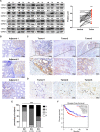
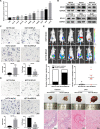
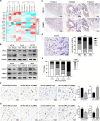
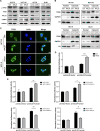
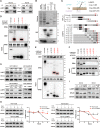
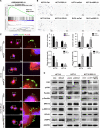

Similar articles
-
[RGL1 overexpression promotes metastasis of colorectal cancer by upregulating motile focal adhesion assembly via activating the CDC42/RAC1 complex].Nan Fang Yi Ke Da Xue Xue Bao. 2025 May 20;45(5):1031-1038. doi: 10.12122/j.issn.1673-4254.2025.05.16. Nan Fang Yi Ke Da Xue Xue Bao. 2025. PMID: 40415435 Free PMC article. Chinese.
-
LAMP3 promotes the invasion of osteosarcoma cells via SPP1 signaling.Mol Med Rep. 2017 Nov;16(5):5947-5953. doi: 10.3892/mmr.2017.7349. Epub 2017 Aug 24. Mol Med Rep. 2017. PMID: 28849219 Free PMC article.
-
Long noncoding RNA HAGLR acts as a microRNA-143-5p sponge to regulate epithelial-mesenchymal transition and metastatic potential in esophageal cancer by regulating LAMP3.FASEB J. 2019 Sep;33(9):10490-10504. doi: 10.1096/fj.201802543RR. Epub 2019 Jul 15. FASEB J. 2019. PMID: 31311326
-
Caspase-8 as a regulator of tumor cell motility.Curr Mol Med. 2014 Feb;14(2):246-54. doi: 10.2174/1566524014666140128111951. Curr Mol Med. 2014. PMID: 24467204 Free PMC article. Review.
-
Function and mechanism of exosomes derived from different cells as communication mediators in colorectal cancer metastasis.iScience. 2024 Feb 27;27(4):109350. doi: 10.1016/j.isci.2024.109350. eCollection 2024 Apr 19. iScience. 2024. PMID: 38500820 Free PMC article. Review.
Cited by
-
Actin Cytoskeleton Polymerization and Focal Adhesion as Important Factors in the Pathomechanism and Potential Targets of Mucopolysaccharidosis Treatment.Cells. 2023 Jul 5;12(13):1782. doi: 10.3390/cells12131782. Cells. 2023. PMID: 37443816 Free PMC article.
-
LAMP3 signature affects cervical cancer progression through autophagy.BMC Cancer. 2025 Jul 24;25(1):1206. doi: 10.1186/s12885-025-14596-w. BMC Cancer. 2025. PMID: 40707912 Free PMC article.
-
UBTD1 is a potential prognostic biomarker in colorectal cancer.Sci Rep. 2024 Aug 2;14(1):17926. doi: 10.1038/s41598-024-68731-x. Sci Rep. 2024. PMID: 39095643 Free PMC article.
-
Single-cell transcriptomics reveals stage- and side-specificity of gene modules in colorectal cancer.Res Sq [Preprint]. 2024 May 24:rs.3.rs-4402565. doi: 10.21203/rs.3.rs-4402565/v1. Res Sq. 2024. PMID: 38826219 Free PMC article. Preprint.
-
A pan-cancer analysis of prognostic significance and immunological role of lysosomal-associated membrane protein 3.J Cell Mol Med. 2024 Feb;28(3):e18088. doi: 10.1111/jcmm.18088. Epub 2023 Dec 26. J Cell Mol Med. 2024. PMID: 38146591 Free PMC article.
References
MeSH terms
Substances
Grants and funding
LinkOut - more resources
Full Text Sources
Medical
Molecular Biology Databases
Research Materials
Miscellaneous

